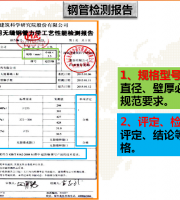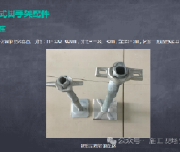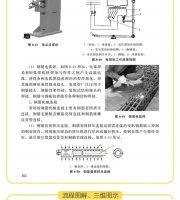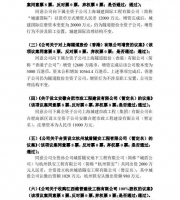1.1 definition and interpretation of words: the following words in the contract agreement, general conditions of contract and special conditions of contract have the meanings given in this clause: 1.1.1 contract 1.1.1 contract: refers to the binding documents as stipulated by law and agreed by the parties to the contract, including the contract agreement, the letter of acceptance (if any), the letter of tender and its appendix (if any) )Special conditions of contract and its attachments, general conditions of contract, technical standards and requirements, drawings, priced bill of quantities or budget and other contract documents
.
The above documents and materials belong to the contents of the contract and have priority in interpretation
.
Contracts for specific projects may include different contents, orders and models
.
When signing and executing contracts, we should pay close attention to the differences with the models
.
1.1.1.2 contract agreement: refers to the written document called “contract agreement” signed by the employer and the contractor, which constitutes the contract
.
1.1.1.3 letter of acceptance: refers to the written document that constitutes the contract and the employer notifies the contractor of winning the bid
.
1.1.1.4 letter of tender: refers to the document called “letter of tender” which is filled in and signed by the contractor and is used for bidding
.
1.1.1.5 appendix to the letter of tender: refers to the documents attached to the letter of tender, which constitute the contract and are called “appendix to the letter of tender”
.
1.1.1.6 technical standards and requirements: refer to the national, industrial or local technical standards and requirements that the construction of the contract shall comply with or guide the construction, as well as the technical standards and requirements agreed in the contract
.
The technical standards and requirements agreed in the specific contract are different from those of the state, industry or local
.
Different technical standards often affect the project cost, which needs attention
.
1.1.1.7 drawings: refer to the drawings constituting the contract, including the design documents, construction drawings, bird’s-eye view and models provided by the employer in accordance with the contract or approved by the employer, as well as the drawings and documents formed during the performance of the contract
.
The drawings shall be examined and qualified in accordance with the law
.
The drawing is an important basis for change claim, especially the drawing documents formed in the process of contract performance
.
Here we remind: if there is any change in the process of contract performance, the drawing must be produced first, and the change cost must be determined before construction
.
In reality, for the change project, most of the time, the construction is carried out first, and then the cost is determined
.
Even there is no change drawing or change notice, which causes great difficulties for the later change and claim
.
1.1.1.8 priced bill of quantities: it refers to the bill of quantities which constitutes the contract and is filled in and marked with price by the contractor according to the specified format and requirements, including instructions and forms
.
1.1.1.9 budget document: refers to the project budget document which constitutes the contract and is prepared by the contractor according to the format and requirements specified by the employer
.
The priced bill of quantities and budget can reflect the data of work efficiency, unit price, charge and so on, which will involve in the process of contract performance
.
If it is necessary to reorganize the price for the items outside the contract and the change claim items, a lot of data should refer to the data in the priced bill of quantities and budget
.
Therefore, when bidding, the data in the priced bill of quantities and budget should consider the impact of the project winning the bid on the re pricing
.
For example: when regrouping the price, the fee is generally considered according to the fee rate when bidding
.
If the fee rate is too low when bidding, it will affect the profit of regrouping items
.
1.1.1.10 other contract documents: refer to the documents or written agreements with contract binding force related to the project construction agreed by the parties to the contract
.
The parties to the contract may stipulate in the special conditions of contract
.
Many employers have their own management methods and systems, which are generally reflected in the form of attachments or in the special conditions of contract
.
These methods, systems and attachments are part of the contract documents
.
1.1.2 parties to the contract and other relevant parties 1.1.2.1 parties to the contract refer to the employer and / or the contractor
.
1.1.2.2 employer: refers to the party who signed the contract agreement with the contractor and the legal successor who obtained the qualification of the party
.
This clause may involve that the employer will transfer the contract
.
If this happens, the Contractor shall evaluate the credit of the successor and decide whether to accept the contract transfer from the employer
.
1.1.2.3 contractor: refers to the party who has signed the contract agreement with the employer and has the corresponding engineering construction contracting qualification and the legal successor who has obtained the qualification of the party
.
1.1.2.4 Supervisor: refers to the legal person or other organization specified in the special conditions of contract and entrusted by the employer to supervise and manage the project according to the law
.
1.1.2.5 Designer: refers to the legal person or other organization specified in the special conditions of contract, entrusted by the employer to be responsible for the engineering design and with corresponding engineering design qualification
.
1.1.2.6 subcontractor: refers to the legal person with corresponding qualifications who, in accordance with the law and the contract, subcontract part of the project or work and sign the subcontract with the contractor
.
1.1.2.7 employer’s representative: refers to the person appointed by the employer and dispatched to the construction site to exercise the employer’s rights within the scope authorized by the employer
.
1.1.2.8 Project Manager: refers to the person in charge of the project appointed by the contractor and dispatched to the construction site, who is responsible for the performance of the contract within the scope authorized by the contractor, and has the corresponding qualification according to the law
.
1.1.2.9 chief supervision engineer: refers to the person in charge appointed by the supervisor and dispatched to the construction site for project supervision
.
1.1.3 project and equipment 1.1.3.1 project: refers to the permanent project and / or temporary project corresponding to the project contracting scope in the contract agreement
.
1.1.3.2 permanent project: refers to the project constructed and handed over to the employer in accordance with the contract, including engineering equipment
.
1.1.3.3 temporary works: refers to all kinds of temporary works built to complete the permanent works agreed in the contract, excluding construction equipment
.
1.1.3.4 unit project: refers to the permanent project specified in the contract agreement, which has independent construction conditions and can form independent use function
.
1.1.3.5 engineering equipment: refers to the mechanical and electrical equipment, metal structure equipment, instruments and other similar equipment and devices constituting the permanent works
.
1.1.3.6 construction equipment: refers to the equipment, appliances and other items required to complete the work agreed in the contract, but does not include engineering equipment, temporary works and materials
.
1.1.3.7 construction site: refers to the site used for engineering construction and other sites specified in the special conditions of contract as an integral part of the construction site, including permanent land occupation and temporary land occupation
.
1.1.3.8 temporary facilities: refers to the temporary production and living facilities for the completion of the work agreed in the contract
.
1.1.3.9 permanent occupation: refers to the land that is specified in the special conditions of contract to be permanently occupied for the implementation of the project
.
1.1.3.10 temporary land occupation: refers to the land temporarily occupied for the implementation of the project specified in the special conditions of contract
.
Note: who will provide temporary land occupation? Who will handle the formalities? Who will bear the cost? 1.1.4 date and period 1.1.4.1 commencement date: including planned commencement date and actual commencement date
.
The planned commencement date refers to the commencement date agreed in the contract agreement; the actual commencement date refers to the commencement date specified in the commencement notice issued by the supervisor in accordance with the provisions of the law in accordance with item 7.3.2 [commencement notice]
.
Note: the planned commencement date is generally stated in the contract
.
If the actual commencement date is inconsistent with the planned commencement date, the Contractor shall claim for the construction period.
.




